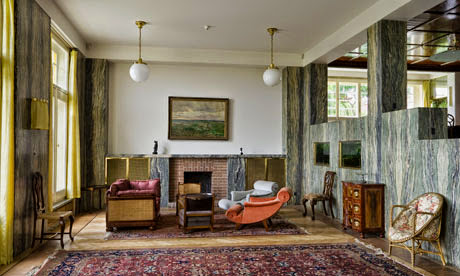After serving in the Austrian army, he studied architecture at the Technical College in Dresden. In 1893, after completing his education, he spent three years in the United States, where he was struck by American efficiency and energy.
When he returned to Europe, he started to work for the firm of Carl Mayreder in Vienna. He renounced ornamentation and believed that what is beautiful must also be useful. His essay "Ornament and Crime" was published in 1908. He believed that lack of ornament in architecture was a sign of spiritual strength and that excessive ornamentation was a crime because it wasted materials and was so labor-intensive that a worker could not be paid a fair wage. This essay became the theoretical manifesto of the modernist movement and was hailed by Le Corbusier as a "Homeric cleansing" of architecture.
Loos believed that ornamentation masked the true nature and beauty of materials. In his own work, he designed austere and unembellished white exteriors, with interiors that let the beauty of materials such as wood and marble speak for themselves.
He is best known for his meticulous selection of materials, his insistence on fine craftsmanship and his idea of "Raumplan," in which interior spaces are ordered and sized based on function.
Well known Modernist architects Richard Neutra and Rudolf Schindler studied under Loos at the Vienna University of Technology.
From thenbs.com, woka.com and newworldencyclopeida.org
 |
| Villa Karma - Montreux, Switzerland atlasofinteriors.polimi-cooperation.org |
 |
| Looshaus - Vienna architectuul.com |





Austere and unembellished they may be, and yet the beauty of form and function speaks for itself.
ReplyDeleteWhile some may think modern architecture is too bland, I think looking at highly ornamented architecture is like eating too much of a rich dessert.
DeleteVilla Meuller proves what I've often expressed, A building can be quite plain outside and very exqusite on the inside.
ReplyDeleteYes, sometimes letting the true nature of the materials...the veins of marble and the grain of wood...is decorative enough.
Delete